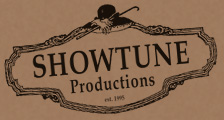|
DAVID
HAWKINS - NOM DE PLUME
New York Cabaret
Online
David M Schwartz
14 December 2001
After being away from Australian
cabaret from September to early December of last year, it has
taken me quite a long time to get back into the cabaret scene
here.
Perhaps this was due to my experience of the changed energy in
the USA or maybe it was simply post-vacation malaise. Whatever
the reason, I have been taking time out from reviewing to have
a dispassionate look at the cabaret scene here in Sydney.
I was a bit disillusioned when I left for my holiday. Two of
the five venues that regularly featured cabaret had altered their
booking policy for the worse; one was now featuring stand-up
comedy and rock bands while the other had decided to curtail
cabaret to one weekend a month. By the time I returned to Australia,
I learned that cabaret had a new lease on life: two new performance
spaces had opened up.
Kabarett Junction, one of the new venues, was my first
port of call soon after my return. Before talking about
the show, let me tell you about David Hawkins, the guiding hand
who set up the room and starred in the first show there.
Hawkins is a singer/actor who has been working in cabaret since
1996.
Prior to that he worked in various productions with the Australian
Opera. In addition to his singing career, David Hawkins
managed The Kirk, a unique performance space in Sydney where
young cabaret artists were given the chance to gain essential
experience.
"Nom de Plume" was the solo show that David Hawkins
chose to inaugurate Kabarett Junction. I first saw this
act in an abbreviated version at Side On Café in February,
2001. The show was clearly inspired by the German kabarett of
the Weimar Republic. The "nom de plume" of the
title refers to the performer's nickname, "the Hawk."
As David stated in his opening patter, "the Hawk will take
you on a flight like no other, and he has some juicy prey: everyone
from solicitors and prostitutes to addicts and celebrities."
What followed was a procession of vignettes, each characterized
in monologue and song. Hawkins had clearly structured the show
as social commentary. This was a lament for the loss of what
was unique and genuine qualities in society and a critique of
the synthetic values that have taken their place. By counterposing
the present day charlatans (the lawyers and celebrities) with
the outsiders of yesteryear (the prostitutes and addicts), Hawkins
very skilfully dramatized his theme.
However, this was no intellectual exercize in the style of German
theater that might have been written by Brecht; this was musical
entertainment of the highest order.
David Hawkins selected material from a variety of sources (rock,
pop, show tunes) to carry his narrative theme. From the
opening medley of "The Whole Shebang" (Buffalo), "Space
Oddity" (Bowie) and "Spinning Wheel" (Thomas)
it was clear that there was a finely tuned musical sensibility
at work. The twenty-three songs that followed maintained
this high level of selection. In addition to his choice
of music, Hawkins used a series of cleverly constructed medleys
to forward his theme and cross-reference what had gone before.
As a performer, David Hawkins has a strong baritone with a very
good high range. He is an high energy performer who is
not afraid to exploit the emotional content of a song's lyric,
but it was his handling of the dramatic elements of each song
that made the show so special.
It would be difficult to single out highlights in "Nom de
Plume," but I will mention some of my favorite moments in
Hawkins' portrayal of this diverse gallery of characters: The
young person yearning for true love ("All I Want" by
Mitchell) or any love ("Any Guy" by Safka); the pomposity
of the lawyer as characterized by "Style" (Schwartz);
the hymn of the fan longing for the greatness of old movie stars
in "Celluloid Heroes" (Davies/Raymond); the prostitute
singing of hard life on the streets in "The Circle"
(Piaf/Ebb) and the haunting song of gay man in "Lavender
Nights" (Spoliansky); and the lament of the addict who is
torn between sobriety, addiction and loss in a stunning medley
of "I Don't Care Much" (Kander/Ebb) and "Where
Have All The Flowers Gone" (Seeger/Colpet).
What was striking was the skill with which Hawkins managed to
marry such diverse source material into a coherent whole.
A word of appreciation must be given to Andrew Worboys, Hawkins'
musical collaborator. This was my first opportunity to hear his
work; it was impressive. He performed in a variety of styles,
ranging from barrel-house to rock to gentle ballads. In each
case, Worboys was able to gauge his sound to perfectly fit the
songs that Hawkins had chosen without allowing us to hear a change
of gears.
Because this was the final cabaret performance at Kabarett Junction
for the year, David Hawkins invited three young artists (Blazey
Best, Rodger Corser and Christine Anu) to join him in a series
of numbers that provided the audience with an added holiday bonus.
True to form, Hawkins used his own show to promote other local
performers. On the basis of this show, Kabarett Junction
will be a space to return to.
BACK TO MEDIA
|

















